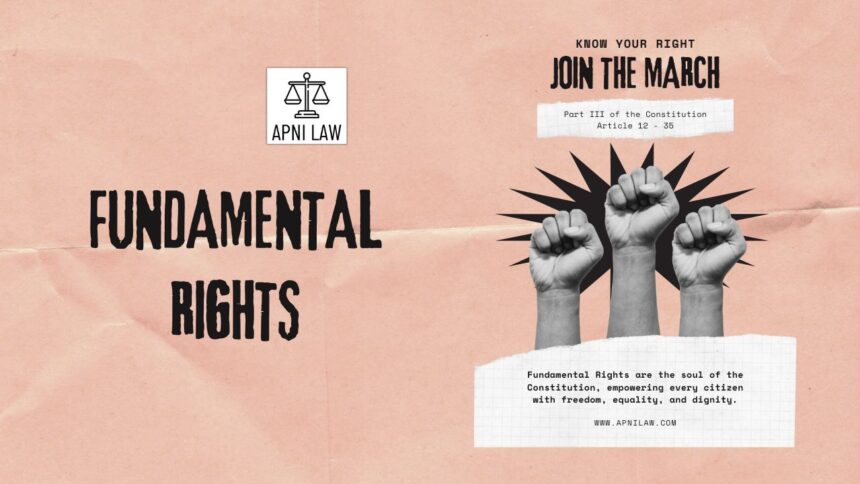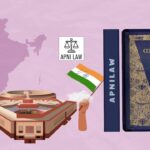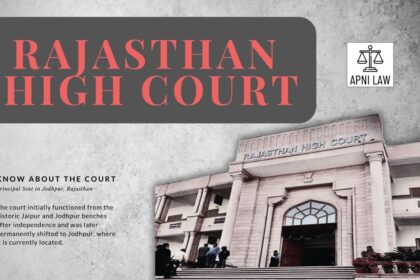Introduction
Dr. B.R. Ambedkar once called Article 32 the “heart and soul of the Constitution”, and for good reason. Fundamental Rights are meaningful only when citizens can enforce them. Without a remedy, rights would remain empty promises. Article 32 gives life to these rights by allowing people to move directly to the Supreme Court if the State or any authority violates them.
This right makes the judiciary the protector of citizens’ freedoms. It ensures that justice is not delayed by layers of bureaucracy and that the Constitution remains a living safeguard for the people.
Meaning of Article 32
Article 32 gives every citizen the right to approach the Supreme Court to enforce Fundamental Rights. It is unique because the right to seek remedies is itself a Fundamental Right. This makes it more powerful than ordinary legal remedies available in lower courts.
The Supreme Court can issue five types of writs under Article 32: habeas corpus, mandamus, prohibition, quo warranto, and certiorari. Each writ serves a different purpose. For example, habeas corpus protects personal liberty, while mandamus directs a public authority to perform its duty. Together, they provide citizens with strong tools against unfair actions by the State.
Why Article 32 is the Heart and Soul of the Constitution
Ambedkar’s description of Article 32 as the “heart and soul” of the Constitution reflects its vital role in democracy. Without enforcement, rights like equality or freedom of speech would remain on paper. Article 32 transforms those rights into enforceable guarantees.
It also places power directly in the hands of the people. Citizens do not need to rely on Parliament or the executive to protect their freedoms. Instead, they can go straight to the Supreme Court. This safeguard ensures that arbitrary or unjust state actions can be stopped quickly.
Scope and Reach of Article 32
Article 32 covers all Fundamental Rights under Part III of the Constitution. Whether it is the right to life under Article 21 or equality under Article 14, citizens can invoke Article 32 whenever these rights are breached.
The scope of this right has expanded through judicial innovation. The Supreme Court introduced Public Interest Litigations (PILs) under Article 32, allowing any concerned citizen to file petitions on behalf of those who cannot approach the Court themselves. This has brought justice to marginalized groups, bonded laborers, and victims of environmental harm. Through PILs, Article 32 has evolved into a tool for social justice as well as individual protection.
Judicial Interpretation of Article 32
Over time, the Supreme Court has given Article 32 a deeper meaning. In Romesh Thapar v. State of Madras (1950), the Court used Article 32 to strike down restrictions on free speech, stressing its role in democracy.
In Maneka Gandhi v. Union of India (1978), the Court expanded the right to life and liberty under Article 21. It held that fairness and dignity are part of life itself, and Article 32 gave citizens the power to enforce this broader view.
The landmark Kesavananda Bharati v. State of Kerala (1973) case confirmed that judicial review under Article 32 is part of the Constitution’s core structure. No amendment can take it away. These rulings show how Article 32 has become a cornerstone of constitutional democracy.
Limitations of Article 32
Although powerful, Article 32 has certain limits. It can be used only for the enforcement of Fundamental Rights, not for ordinary legal rights. Citizens must approach lower courts for other disputes.
During a National Emergency, Parliament can suspend the right to move courts under Article 359. This happened during the Emergency in 1975, when the Supreme Court in ADM Jabalpur v. Shivkant Shukla (1976) controversially upheld the suspension of rights. That judgment was widely criticized, and later rulings like Puttaswamy v. Union of India (2017) reaffirmed that core rights, including privacy, must remain protected even during crises.
Role in Strengthening Democracy
Article 32 has strengthened India’s democracy by holding the State accountable. It ensures that every citizen, rich or poor, can seek justice directly from the highest court. Through PILs, the Supreme Court has addressed issues ranging from pollution control to women’s rights and protection of marginalized groups.
This right makes justice accessible and ensures that democracy serves all sections of society. It reflects the principle that rights are meaningful only when people have real remedies to defend them.
FAQs on Article 32
Why is Article 32 called the heart and soul of the Constitution?
Because it makes Fundamental Rights enforceable. Without it, rights would remain promises without remedies.
Can Article 32 be suspended?
Yes, during a National Emergency under Article 359. However, the judiciary has clarified that the Constitution’s core, including judicial review, cannot be destroyed.
How is Article 32 different from Article 226?
Article 32 allows citizens to directly approach the Supreme Court for Fundamental Rights. Article 226 empowers High Courts to issue writs for both Fundamental Rights and other legal rights.
Conclusion
Article 32 stands at the very core of India’s democracy. By giving citizens direct access to the Supreme Court, it ensures that rights are not just ideals but enforceable guarantees. Ambedkar’s vision of this provision as the “heart and soul” of the Constitution remains true even today.
In a diverse and complex nation like India, Article 32 not only safeguards individual liberty but also strengthens collective trust in the rule of law. It is the bridge between rights written in the Constitution and justice delivered in real life, making it one of the most vital provisions of the Indian legal system.








